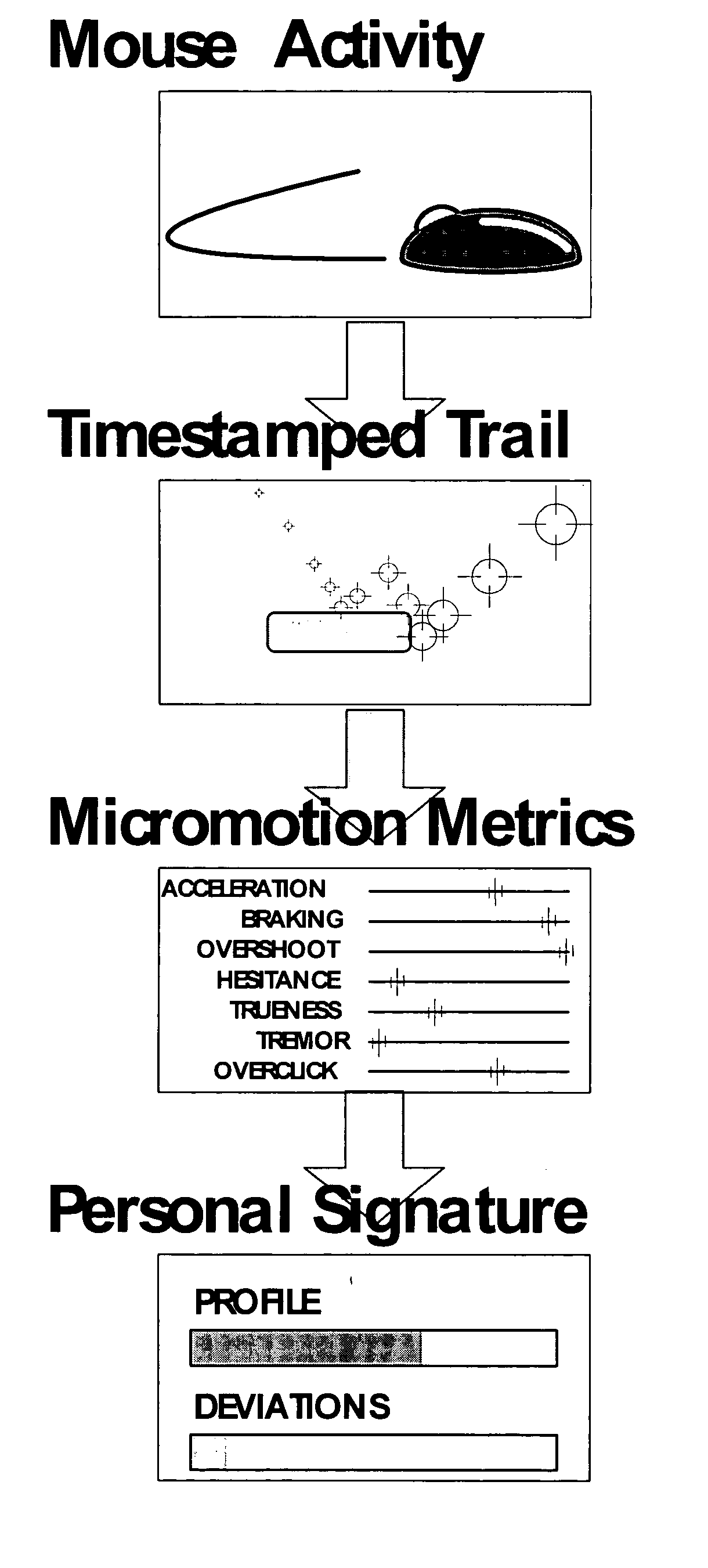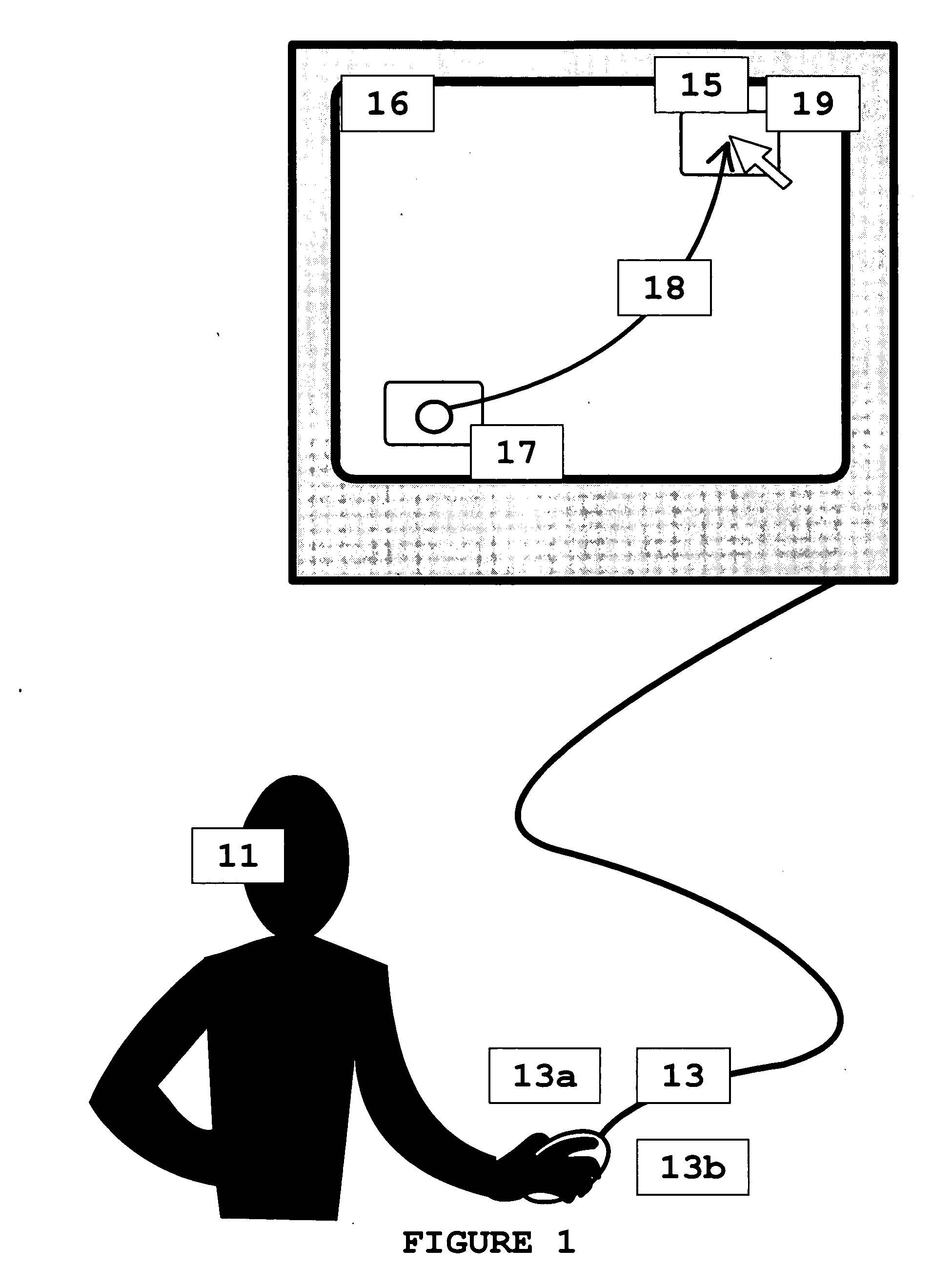Mouse performance identification
- Summary
- Abstract
- Description
- Claims
- Application Information
AI Technical Summary
Benefits of technology
Problems solved by technology
Method used
Image
Examples
Embodiment Construction
[0053]FIG. 1 illustrates some of the basic principles of the present invention. User 11 manipulates mouse 13 to move the cursor 15 from a first target area 17 on a computer screen 16 to a second target area 19. Typically, upon successfully moving or displacing (hereinafter “displacing”) the cursor 15 within the second target area 19, the user enters a mouse-click by clicking on the left button 13a of the mouse 13. In FIG. 1, the user 11 traces an arc 18 as he displaces the cursor 15 from the first target area 17 to the second target area 18. According to the principles of the present invention, the way the user 11 manipulates the mouse 13 depends on the anatomical features of his hand with which he manipulates the mouse 13, as well as his temperament and other psychological factors. Ordinary computer programs or GUI's only record the mouse-clicks entered at the first and second target areas. However, software components according to the present invention look to the trace 18 that us...
PUM
 Login to View More
Login to View More Abstract
Description
Claims
Application Information
 Login to View More
Login to View More - R&D
- Intellectual Property
- Life Sciences
- Materials
- Tech Scout
- Unparalleled Data Quality
- Higher Quality Content
- 60% Fewer Hallucinations
Browse by: Latest US Patents, China's latest patents, Technical Efficacy Thesaurus, Application Domain, Technology Topic, Popular Technical Reports.
© 2025 PatSnap. All rights reserved.Legal|Privacy policy|Modern Slavery Act Transparency Statement|Sitemap|About US| Contact US: help@patsnap.com



